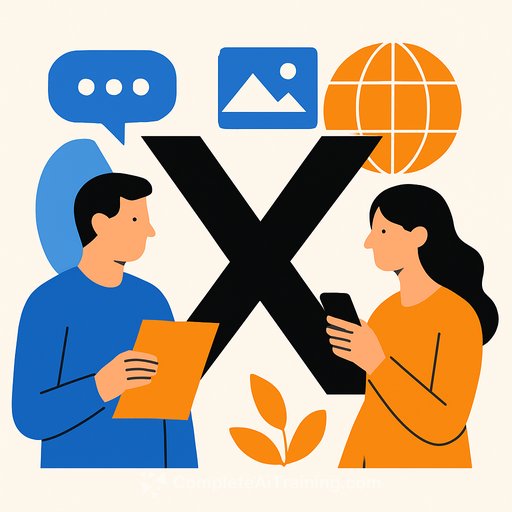Overcoming AI adoption hurdles in HR: from fear to outcomes
This article captures the key takeaways from a podcast conversation with Michelle Dawkins, Vice President of Solution Consulting at Workday. The thread running through the discussion is clear: HR has shifted from anxiety about AI to serious implementation, testing, and measurable results.
One to two years ago, leaders asked "Should we use AI?" Now, they're asking "How do we get started?" As Dawkins put it, "Then there was a lot of nervousness about adopting AI… Now we've shifted to where organisations really want to know: how do I get started?"
Generative vs agentic AI: what HR needs to know
Generative AI synthesises information and creates content-think job descriptions, personalised interview questions, or learning plans. Agentic AI goes further. It performs tasks and drives outcomes-like routing HR cases, nudging candidates to complete steps, or initiating onboarding tasks.
Dawkins shared results from early adopters: 50% reduction in candidate screening time and a 25% reduction in HR case volumes using self-service AI agents. That's not theoretical. It's the start of a more efficient HR operating model.
Where AI is moving the needle in HR today
- Talent acquisition: automated screening, scheduling, and candidate outreach.
- Job description creation: fast, personalised, and aligned to skills.
- Onboarding: intelligent agents that cut manual steps and reduce time to productivity.
- Employee self-service: fewer HR tickets, faster answers, and better employee experience.
Skills are the backbone: build for adaptability, not just efficiency
Skills development and learning adaptation came through as a core theme. AI can personalise learning, speed up development, and surface stretch opportunities in real time.
As Dawkins noted, "AI literacy can mean different things. We're not expecting HR people, for example, to start building large language models; what they do need to be is AI-curious." The job is to understand where AI helps, set the guardrails, and lead adoption across the business.
AI as a sponsor: more equitable growth
Skills-based talent development is breaking down old barriers. AI can act as an impartial sponsor-flagging hidden potential, recommending projects, and nudging people toward growth they might not seek out themselves.
This matters for equity. Dawkins highlighted how this approach can reduce impostor syndrome and open pathways to leadership, especially for women and those without traditional educational routes.
The real blockers aren't technical
- Fear of job loss.
- Lack of time and competing priorities.
- Uncertainty on where to start.
- A trust gap around data use, bias, and accountability.
Tools are the easy part. Culture is the work. Leaders must model a positive stance on AI, set a clear ethical bar, and sponsor upskilling so teams feel confident using these systems.
Trust by design: what good looks like
- Clear purpose: state the HR outcomes you're targeting (e.g., time-to-hire, internal mobility).
- Transparency: explain how AI assists decisions, and where humans remain accountable.
- Data governance: permissioned access, audit trails, and retention policies.
- Bias monitoring: test datasets and outputs; review with DEI partners.
- Privacy and security: follow accepted frameworks and document controls.
If you're building your approach, the NIST AI Risk Management Framework is a useful reference for policy and controls. View NIST AI RMF.
A practical 90-day starter plan for HR
- Days 0-30: Frame the use cases
Pick two quick wins (e.g., JD creation and HR case deflection). Define metrics, risks, and approval steps. Brief HRBPs and Legal early. - Days 31-60: Pilot with controls
Run in a sandbox with a small group. Monitor accuracy, feedback, and bias. Provide a simple playbook and "what to do if" guidance. - Days 61-90: Prove and scale
Publish results (time saved, quality, sentiment). Tweak prompts, workflows, and access. Expand to a second function (e.g., onboarding).
Metrics that matter to your exec team
- Time-to-hire and screening cycle time.
- HR case volume and first-contact resolution.
- Quality-of-hire (hiring manager satisfaction, early performance signals).
- Internal mobility and skills coverage across critical roles.
- Employee and candidate satisfaction (CES/CSAT/NPS).
Upskilling: make "AI-curious" the team norm
Give your HR team space to learn, test, and share. Start with prompt fundamentals, ethical use, and hands-on practice inside your HR stack.
If you need structured, role-based learning paths, explore these resources: AI courses by job and the latest AI courses.
Leadership's role: set the tone, then remove friction
Adoption follows visible leadership. Set a simple policy, pick measurable use cases, and celebrate the teams doing real work with AI. Keep the message steady: AI augments people; it doesn't replace potential.
That alignment-ethics, upskilling, and clear value-turns AI from a tech project into part of how HR operates.
Want the full conversation?
Listen to the full episode featuring Michelle Dawkins. Duration: 34:41. Recorded on November 3, 2025. Available via your usual podcast app.
Bottom line
HR has moved past fear. The teams winning today pair practical use cases with strong guardrails, treat skills as a system, and keep humans in control. Do that, and the numbers follow.
Your membership also unlocks:






